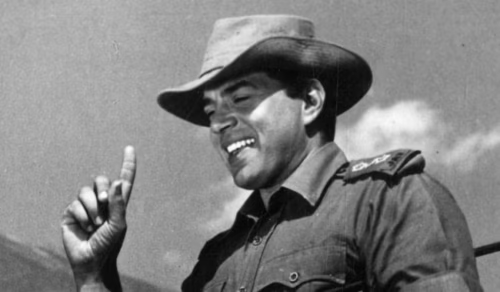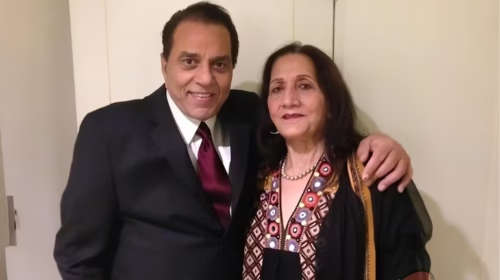Dharmendra, one of Hindi cinema’s most loved stars and a leading face of the 1970s and 1980s Bollywood, has died at the age of 89 in Mumbai, according to local media reports.
The actor, often called Bollywood’s “He-Man” for his strong screen presence and action roles, had been unwell for several weeks. Reports said he died at home in Mumbai after a period of ill health.
Dharmendra is survived by his wives, children, and grandchildren.
A giant of Hindi cinema
Born Dharmendra Kewal Krishan Deol in 1935 in Punjab, he grew up on a farm before moving to Mumbai in the late 1950s. He first entered the film industry after winning a talent contest run by a film magazine, and made his Hindi film debut in 1960.
Over more than six decades in the industry, Dharmendra appeared in over 300 films. He worked across many genres, including action, romance, comedy, and socially themed dramas. By the 1970s, he was one of the top stars of Hindi cinema and a key part of what many fans call the golden era of Bollywood.
His on-screen appeal came from a rare mix of rugged masculinity and gentle charm. He was known for playing honest, brave, and loyal characters while also winning over audiences with light romance and humor.
In 2012, the Government of India awarded him the Padma Bhushan, the country’s third-highest civilian award, for his contributions to Indian cinema.
Iconic films and roles
Dharmendra’s filmography is packed with hits that remain popular with audiences across generations.
One of his most famous roles was in the classic film “Sholay” (1975), often ranked among India’s greatest movies. In the film, he played an easygoing, witty small-time criminal who teamed up with another outlaw, Amitabh Bachchan, to capture a feared bandit. Their partnership became one of the most memorable on-screen duos in Hindi film history.
“Sholay” has long been a part of Indian pop culture. Dharmendra’s lines and scenes from the film are still quoted and referenced in other movies and widely shared on social media, where some have become memes.
Beyond “Sholay,” Dharmendra starred in a wide range of successful films, including:
- “Mera Gaon Mera Desh” (1971), an action drama where he played a reformed criminal who defends a village from bandits
- “Chupke Chupke” (1975), a much-loved comedy that showed his talent for light, witty roles
- Numerous romantic and family dramas made him a favorite with audiences of all ages
His ability to shift between serious roles, action scenes, and pure comedy helped him stay in demand for many years.
A long career that adapted with time
While Dharmendra became famous for his heroic and romantic roles in the 1960s, 1970s, and 1980s, he continued to act well into his later years.
From the 1990s and 2000s onward, he moved into more character-driven parts, often playing fathers, grandfathers, and elder figures with warmth and dignity. Even as new generations of stars rose, his presence on screen continued to draw interest and respect.
Younger filmmakers also invited him into their projects. Director Karan Johar cast him in the 2023 film “Rocky Aur Rani Kii Prem Kahaani” (Rocky and Rani’s Love Story), where he played a key family member in an ensemble cast. Johar later paid tribute to him, calling him a “massive mega star” and the ideal image of a mainstream film hero.
Dharmendra’s last appearances included character roles in later-life projects, including the war biopic “Ikkis,” which showcased his continued interest in acting even in his late eighties.
In a 2021 interview, Dharmendra reflected on his journey and said he never imagined his career would reach so far or last so long.
Personal life and family ties to cinema
Dharmendra married Prakash Kaur before his film career took off, and they had four children together. Two of his sons, Sunny Deol and Bobby Deol, followed him into Bollywood and became successful actors in their own right. His nephew, Abhay Deol, also joined the industry and is known for offbeat and mainstream roles.
During the peak of his career, Dharmendra’s on-screen pairing with actress Hema Malini became one of the most popular collaborations in Hindi cinema. The two starred together in more than two dozen films, and their chemistry won over large audiences across India and abroad.
In 1980, he married Hema Malini. The relationship drew widespread media attention because he did not divorce Prakash Kaur. Reports at the time said he briefly converted to Islam to marry for a second time, since Hindu personal law restricts bigamy. With Hema Malini, he had two daughters, including actor Esha Deol.
Dharmendra remained closely attached to his family, which spans several generations of film personalities. His children and grandchildren are part of a film dynasty that continues to shape Hindi cinema.
A brief turn to politics
Beyond films, Dharmendra also spent a short period in public life.
He contested elections as a Bharatiya Janata Party candidate and served as a Member of Parliament from 2004 to 2009. His time in politics was limited, and he later stepped back from that role, returning his focus to family and occasional film work.
National mourning and tributes
News of Dharmendra’s death led to an outpouring of grief from fans, colleagues, and leaders across India.
Prime Minister Narendra Modi shared his condolences on the social media platform X, praising Dharmendra as an “iconic film personality” and a “phenomenal actor” who brought both charm and depth to his work. President Droupadi Murmu also expressed sorrow at his passing.
Media reports said senior actors, including Amitabh Bachchan, attended his funeral at a crematorium in Juhu, a suburb of Mumbai. Many from the film industry paid their respects, both in person and online, recalling his kindness, professionalism, and sense of humor.
For many fans who grew up watching his films on cinema screens and later on television and streaming platforms, his death marks the end of an era in Bollywood history.
Legacy and impact on Bollywood
Dharmendra’s career shaped the image of the Hindi film hero for many years. He combined physical action and strength with romance, comedy, and powerful emotional scenes. This mix allowed him to connect with urban and rural audiences alike, from single-screen theaters in small towns to multiplexes in big cities.
His films from the 1960s and 1970s still enjoy repeat viewings on television and online. Younger viewers continue to discover him through classic hits, while long-time fans revisit his work with nostalgia.
Key parts of his legacy include:
- A body of more than 300 films across six decades
- Iconic roles in classics like “Sholay,” “Chupke Chupke,” and “Mera Gaon Mera Desh.”
- A long-lasting on-screen and off-screen partnership with Hema Malini
- A film family that spans three generations of actors
- Recognition by the Indian state with the Padma Bhushan
His journey from a small town in Punjab to the top ranks of Hindi cinema remains a powerful story for many aspiring actors. He often spoke with humility about his success, reminding fans that he never expected a career as long and celebrated as his.
As Bollywood fans across India, Pakistan, and the global diaspora look back on his work, Dharmendra’s films continue to offer action, laughter, romance, and strong characters that stand the test of time.
For many, he will remain not only a star of his era but a timeless figure in the history of Indian cinema.
















